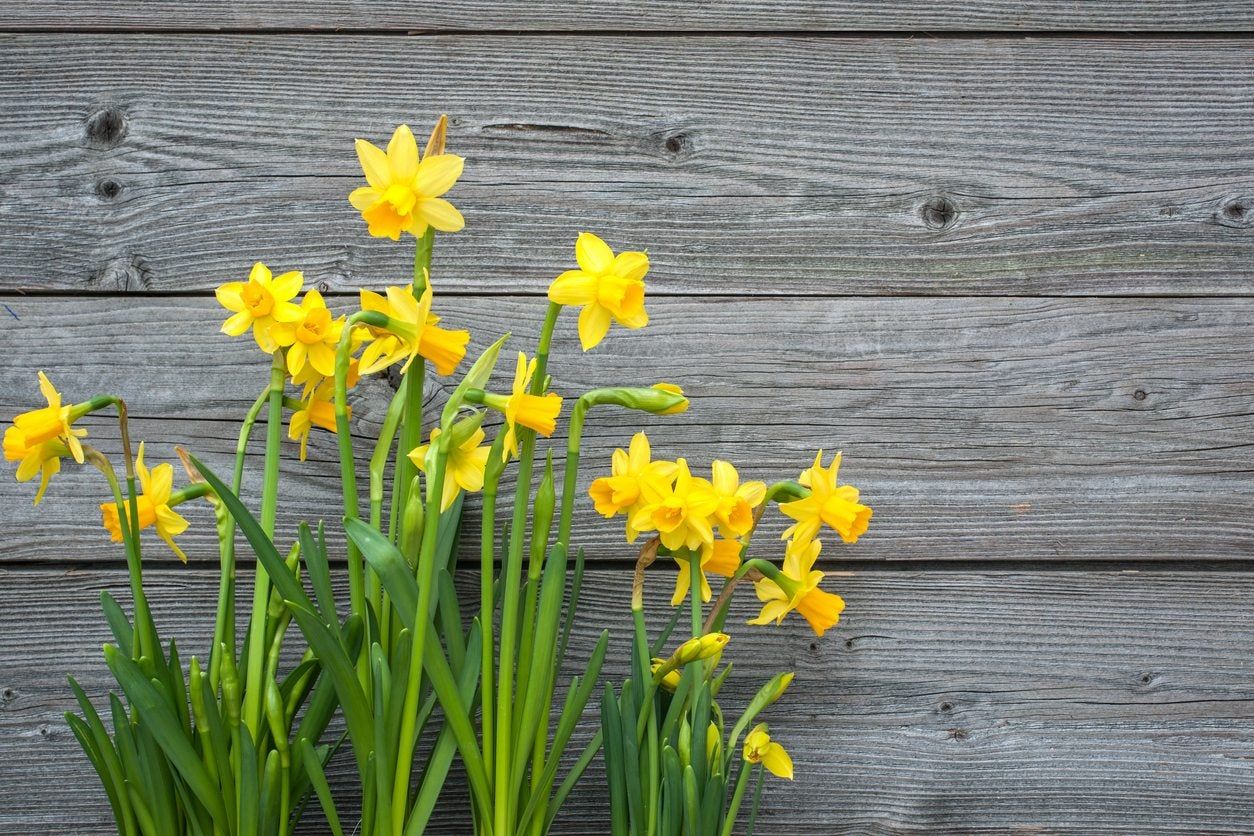Daffodil Planting Care Tips: How To Plant Daffodils In Your Garden


Daffodils are a lovely addition to the spring garden. These easy-to-care-for flowers add bright spots of sunshine that will return year after year. The trick is to plant them properly. Let's take a look at how to plant daffodil bulbs.
How to Plant Daffodil Bulbs
If you live in USDA zones 4 to 6, the best time to plant daffodils is as soon as they are available in early autumn. When growing daffodils, you should plant them in groups of ten or more. All you do is make a loose circle with about seven bulbs and put three in the middle. For aesthetic reasons, you don't want to mix different cultivars within each planting group. The effect will be better if you plant one kind together (such as a group of ten "Ice Follies," but not a group of "Ice Follies" mixed with "Spellbinder," etc.). You can plant these in bigger blocks if your space allows it, using 25 or more bulbs. Daffodils look great in a formal garden with shapes like squares or circles. Even tapered, fish-shaped plantings look great.
Steps for Planting Daffodil Bulbs
- Be sure to plant the daffodil bulbs with the pointy end up and the fatter, somewhat flattened end down.
- Plant your daffodils twice as deep as the bulb is tall. In other words, if a bulb is 2 inches (5 cm.) from the base to the tip, you would dig a 6 inch (15 cm.) deep hole to put the bulb 4 inches (10 cm.) below the soil level. Deep planting helps prevent frost heave and protects the bulbs from accidental damage from spades and rakes. You don't need to measure the hole -- just give it your best guess. Larger bulbs go deeper, of course, and smaller bulbs go closer to the surface. Plant the bulbs more deeply in sandy soil and more shallowly in heavier, clay type soils.
- You will want to cover the bulbs with soil and then water them well after you're finished planting them. Mulch the area with pine bark mulch, chopped leaves, or whatever you usually use as mulch to help protect it.
In zones 6 and 7, garden daffodils will bloom in mid-spring, but they'll come sooner in a mild winter region (zones 8 and 9). Of course, this means they bloom later in colder regions. Growing daffodils is very reliable and they will come back year after year. Combining them with other kinds of plants such as perennials, annuals, and shrubs will make your garden a livelier and more interesting place. Learn more about planting daffodils in this video:
Gardening tips, videos, info and more delivered right to your inbox!
Sign up for the Gardening Know How newsletter today and receive a free download of our DIY eBook "Bring Your Garden Indoors: 13 DIY Projects For Fall And Winter".

Heather Rhoades founded Gardening Know How in 2007. She holds degrees from Cleveland State University and Northern Kentucky University. She is an avid gardener with a passion for community, and is a recipient of the Master Gardeners of Ohio Lifetime Achievement Award.
-
 How Often Should You Water A Spider Plant? Tips To Keep Spider Plants Happy And Healthy
How Often Should You Water A Spider Plant? Tips To Keep Spider Plants Happy And HealthySpider plants are hardy and easy to grow, but they do need proper watering to thrive. Read our tips on how often to water your spider plants.
By Amy Grant
-
 How To Scarify Seeds: Use Pro Techniques To Speed Up Seed Germination
How To Scarify Seeds: Use Pro Techniques To Speed Up Seed GerminationBoost your growing success with expert seed scarification methods. Try nicking, sanding, boiling, and chemical solutions for faster, better germination rates.
By Teo Spengler